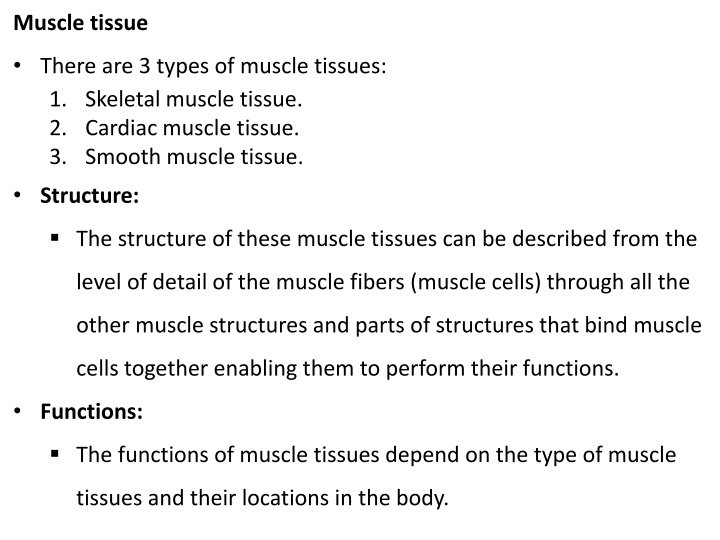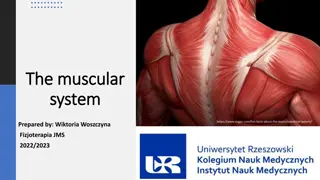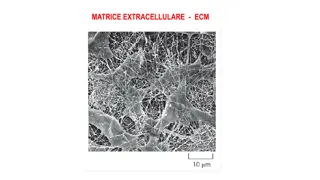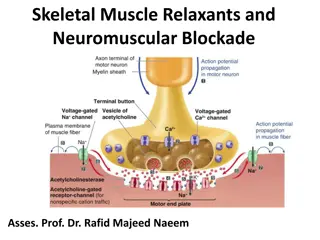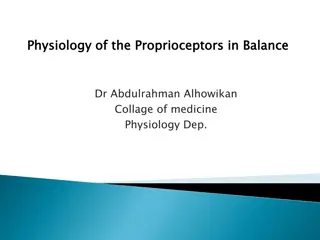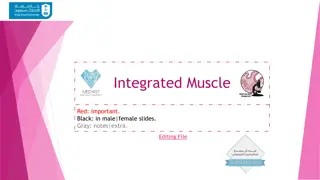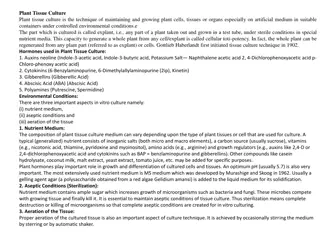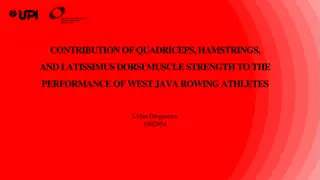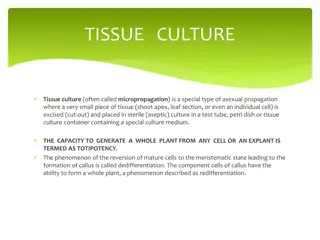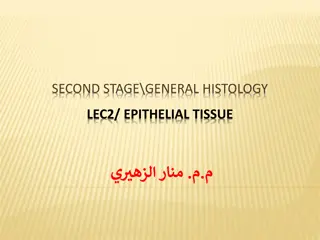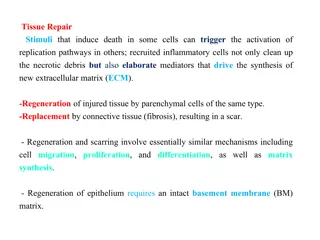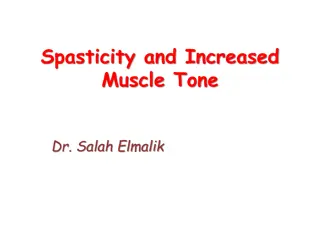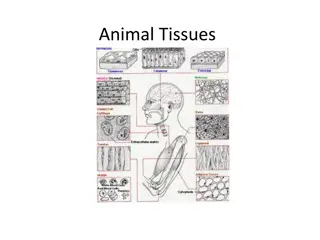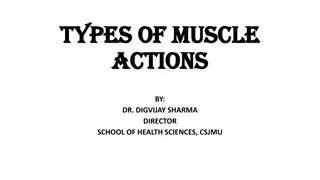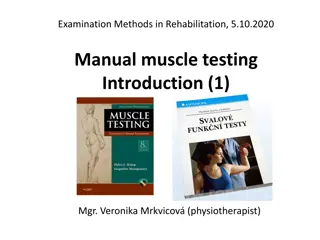Overview of Muscle Tissue Types and Functions
Muscle tissue consists of skeletal, cardiac, and smooth muscle tissues, each with unique structures and functions in the body. Skeletal muscle enables conscious movement, while cardiac muscle pumps blood through the heart. Understanding the basic structure of muscle fibers and their connective tissue helps grasp their functions.
Download Presentation

Please find below an Image/Link to download the presentation.
The content on the website is provided AS IS for your information and personal use only. It may not be sold, licensed, or shared on other websites without obtaining consent from the author.If you encounter any issues during the download, it is possible that the publisher has removed the file from their server.
You are allowed to download the files provided on this website for personal or commercial use, subject to the condition that they are used lawfully. All files are the property of their respective owners.
The content on the website is provided AS IS for your information and personal use only. It may not be sold, licensed, or shared on other websites without obtaining consent from the author.
E N D
Presentation Transcript
Muscle tissue There are 3 types of muscle tissues: 1. Skeletal muscle tissue. 2. Cardiac muscle tissue. 3. Smooth muscle tissue. Structure: The structure of these muscle tissues can be described from the level of detail of the muscle fibers (muscle cells) through all the other muscle structures and parts of structures that bind muscle cells together enabling them to perform their functions. Functions: The functions of muscle tissues depend on the type of muscle tissues and their locations in the body.
1. Skeletal Muscle Tissue Structure: Skeletal muscle is called "striated" because of its appearance consisting of light and dark bands visible using a light microscope. A single skeletal muscle cell is long and approximately cylindrical in shape, with many nuclei located at the edges (periphery) of the cell. Function: 1. Movement of the skeleton under conscious control, including movement of limbs, fingers, toes, neck, etc. 2. Movement of tissues of facial expression under conscious control, e.g. ability to smile and to frown.
Basic structure and terminology of skeletal muscle: A layer of dense connective tissue, which is known as epimysium and is continuous with the tendon, surrounds each muscle A muscle is composed of numerous bundles of muscle fibers, termed fascicles, which are separated from each other by a connective tissue layer termed perimysium. Endomysium is the connective tissue that separates individual muscle fibers from each other. Mature muscle cells are termed muscle fibers or myofibers and they are often simply referred to as fibers. Each myofiber is a multinucleate syncytium. The plasma membrane of a muscle cell, called the sarcolemma, separates the sarcoplasm (muscle cell cytoplasm) from the extracellular surroundings.
2- Cardiac Muscle Tissue Structure: Cardiac muscle fibers are striated, branched (sometimes described as Y shaped), and have a single central nucleus. These fibers are attached at their ends to adjoining fibers by thick plasma membranes called intercalated discs. Function: 1. Pumping of blood through the heart: Alternate contraction and relaxation of cardiac muscle pumps deoxygenated blood through the right atrium and right ventricle to the lungs, and oxygenated blood through the left atrium and left ventricle to the aorta, then the rest of the body.
Cardiac muscle cells usually have a single (central) nucleus. The cells are often branched, and are tightly connected by specialised junctions. The region where the ends of the cells are connected to another cell is called an intercalated disc. The intercalated disc contains gap junctions, adhering junctions and desmosomes.
3- Smooth Muscle Tissue Structure: Unlike Skeletal and Cardiac muscle tissue, Smooth muscle is NOT striated. Smooth muscle fibers are small and tapered with the ends reducing in size, in contrast to the cylindrical shape of skeletal muscle. Each smooth muscle fiber has a single centrally located nucleus. Function: 1. Contractions of smooth muscle constrict the vessels they surround. This is particularly important in the digestive system in which the action of smooth muscle helps to move food along the gastrointestinal tract as well as breaking the food down further. 2. Smooth muscle also contributes to moving fluids through the body and to the elimination of indigestible matter from the gastrointestinal system.
Smooth Muscle Tissue Smooth muscle is made up of cells that contain a single central nucleus. The cells stick together and are connected by specialised cell junctions. The cells are spindle shaped, and the nucleus is central.
